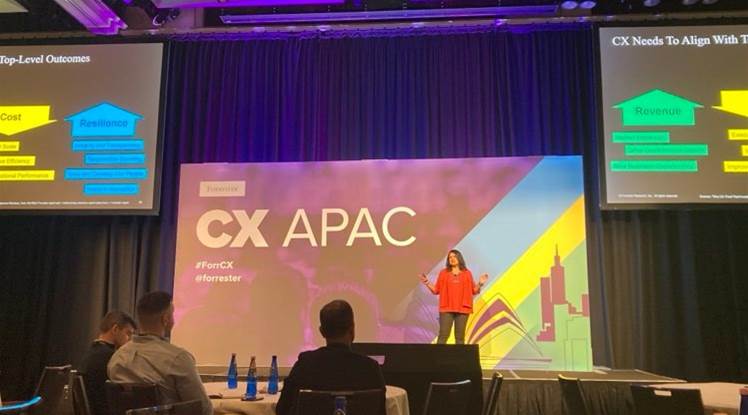In order to get c-suite executives to fund customer experience projects, CX needs to align with top level outcomes, said Su Doyle, CX executive partner and senior analyst at Forrester.
According to Doyle, framing CX discussions at the executive level relies on what she calls “executive empathy”.
Doyle spoke at Forrester’s CX APAC event in Sydney today and highlighted the importance in connecting CX to the outcomes that matter to c-suite execs, being increased revenue, decreased costs and improved resilience.
“Increasing revenue sounds like market expansion, driving omnichannel growth, new business opportunities. Cost sounds a lot like efficiency, executing at scale, increasing efficiency, increasing operational performance. And resilience is a little more nuanced,” she said.
“You’ll see terms like integrity and transparency, responsible sourcing, growing and developing people and investing in innovation, because if you're not innovating, based on the rest of the market, you are standing still.”
Doyle believes that CX can impact every element of company performance, and executives need to understand how it relates to the categories that they are most interested in.
These include customer acquisition, customer retention, cost of acquiring new customers, cost of selling new products, business continuity and risk mitigation, among others.
She highlighted some of the large enterprises in the Global 100 that are aligning customer experience directly with revenue and profit. One such company is French financials business AXA, number 46 in the Global 100.
“AXA sets improved CX as a top priority to drive financials. They put their priority actions and the financials side by side for shareholders,” she said.
Another global business proritising CX is China’s JD.com, which names CX as a business risk, whereby should its customer experience decline, the business reputation will be materially at risk of an adverse impact.
“JD lists CX as their top risk, which creates urgency for managing it.”
Communicating the value of CX as it relates to revenue, cost and resilience allows will allow the c-suite to understand the tangible value in the project, she said.
“Collect key metrics, connect CX to outcomes, communicate CX value and elevate your CX impact,” said Doyle.
Doyle recollected one of her own successful CX pitches to an executive team who was interested in expanding their customer base.
“I was able to tie improved customer satisfaction to reduced churn and increased customer lifetime value, which meant the org had to get fewer new customers. I was also able to relate it to faster time to revenue so we could realise value faster. As a result, I got my funding, we launched the product. So I did it, and you can too.”




_(22).jpg&h=140&w=231&c=1&s=0)







 iTnews Executive Retreat - Security Leaders Edition
iTnews Executive Retreat - Security Leaders Edition












_(1).jpg&h=140&w=231&c=1&s=0)



